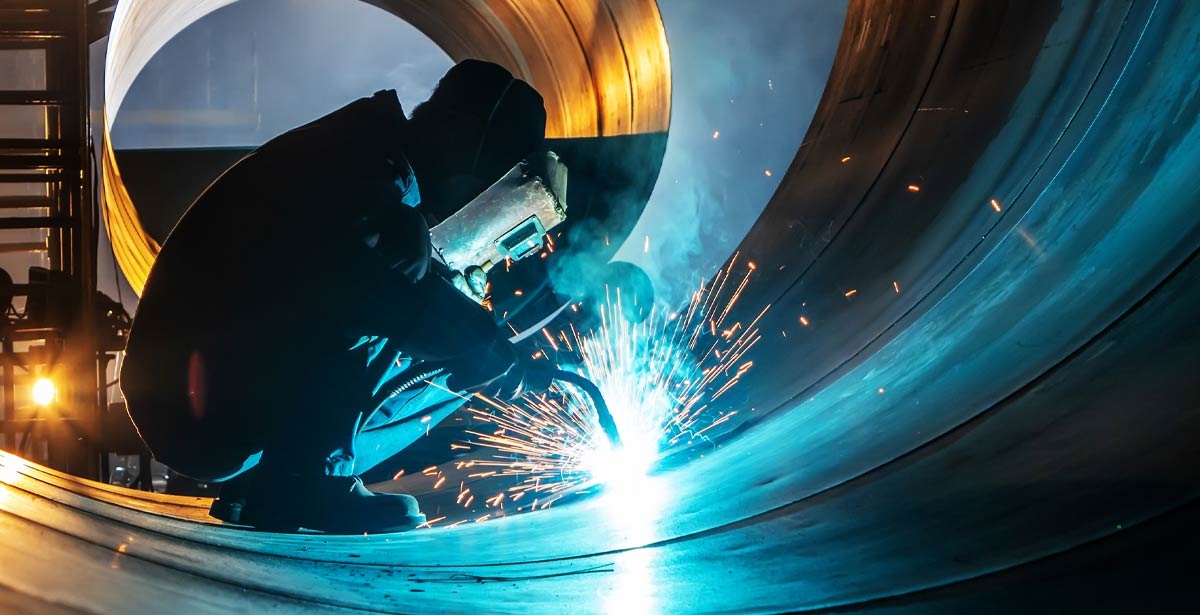The Ultimate Overview to Welding WPS Procedures: A Comprehensive Introduction for Welders
In the intricate world of welding, Welding Procedure Specifications (WPS) function as the foundation of making sure top quality, uniformity, and safety in welding operations. Comprehending the subtleties of creating, applying, and keeping track of WPS procedures is necessary for welders seeking to boost their craft and meet market requirements. As we dig right into the various elements of a WPS and discover the complexities of qualification and certification, we will discover the vital function these procedures play in the realm of welding. Allow's get started on a journey to untangle the complexities and importance of WPS treatments in welding methods.
Significance of WPS Procedures
Recognizing the relevance of Welding Procedure Specifications (WPS) treatments is essential for guaranteeing the top quality and stability of bonded structures. WPS treatments function as a roadmap for welders, outlining the necessary actions, specifications, and materials required to achieve an audio weld. By adhering to WPS guidelines, welders can guarantee consistency in their job, leading to reliable and structurally audio welds.
One of the primary reasons why WPS procedures are necessary is their role in maintaining weld high quality and honesty. Following the defined welding criteria and strategies outlined in the WPS helps stop flaws such as porosity, splitting, or incomplete combination, which can endanger the stamina and durability of the weld.

Elements of a WPS
A Welding Treatment Requirements (WPS) usually consists of vital elements that information the specific requirements for implementing a weld, making certain consistency and quality in the welding procedure. The crucial components of a WPS include crucial variables such as base metals, filler steels, preheat and interpass temperatures, welding procedures, securing gases, welding settings, and post-weld warmth therapy requirements.
Base steels refer to the products being joined, while filler steels are made use of to load the space between the base steels throughout welding. The welding process outlines the details technique to be utilized, whether it's gas steel arc welding (GMAW), shielded metal arc welding (SMAW), or an additional approach. Welding placements define the orientations in which welding can be performed.

Certification and Accreditation
Having developed the important elements of a Welding Treatment Specification (WPS), the focus currently changes in the direction of the critical facets of credentials and certification in welding techniques.

Accreditation, on the various other hand, is the formal recognition of a welder's certifications by a relevant qualification body or organization. Welding qualifications are normally based upon the certain welding procedures, products, and placements a welder is qualified to deal with. Holding a valid welding accreditation shows that a welder fulfills industry standards and is skilled to carry out welding jobs to the needed specs.
Developing a WPS
To develop a Welding Procedure Requirements (WPS) that satisfies sector standards, careful consideration of welding procedures, materials, and operational specifications is crucial (welding WPS). The here are the findings primary step in producing a WPS is to recognize the welding procedure to be made use of, such as gas metal arc welding (GMAW) or shielded metal arc welding (SMAW) When the welding procedure is identified, the following crucial aspect is choosing the suitable materials, taking into consideration variables like base metal type, thickness, and joint design. Operational parameters such as welding current, voltage, travel rate, and securing gas make-up have to additionally be thoroughly specified in the WPS.

Applying and Keeping Track Of WPS
Upon settling the thorough Welding Treatment Requirements (WPS) that meticulously information welding processes, materials, functional criteria, and quality control actions, the emphasis moves to properly applying look at here now and monitoring the established treatments. Application includes making sure that all welders entailed in the task are familiar with the WPS and follow it carefully during the welding process. This requires providing adequate training and guidance to ensure adherence to the defined treatments. Keeping an eye on the WPS entails continuous oversight to confirm that welding tasks align with the documented specifications. Inspections, screening, and quality assurance procedures are crucial parts of the surveillance process to determine any problems or variances without delay. Routine audits and evaluations of the welding procedures help in preserving consistency and top quality throughout the job. Effective execution and monitoring of the WPS are important for guaranteeing the integrity, toughness, and safety and security of the welded joints, inevitably adding to the overall success of the welding job.
Conclusion
In conclusion, understanding and following Welding Treatment Specs (WPS) is essential for welders to make certain quality, consistency, and safety and security in their work. By recognizing the components of a WPS, obtaining correct qualifications and certifications, producing detailed procedures, and implementing and checking them properly, welders can enhance their skills and efficiency in welding practices. Abiding by WPS procedures is necessary for generating top quality welds and conference industry requirements.
In the complex globe of welding, Welding Treatment Requirements (WPS) serve as the backbone of guaranteeing high quality, uniformity, and safety and security in welding procedures. The welding procedure outlines the specific strategy to be used, whether it's gas metal arc welding (GMAW), protected metal arc welding (SMAW), or an additional technique.To create a Welding Treatment Specification (WPS) that satisfies industry requirements, mindful factor to consider of welding processes, products, and operational specifications is important. The very first action in developing a WPS is to recognize the welding procedure to be made use of, such as gas metal arc welding (GMAW) or protected metal arc welding (SMAW)Upon finalizing the detailed Welding Procedure Spec (WPS) that diligently details welding processes, products, operational parameters, and top quality guarantee procedures, the focus shifts to effectively implementing and monitoring the well-known treatments.